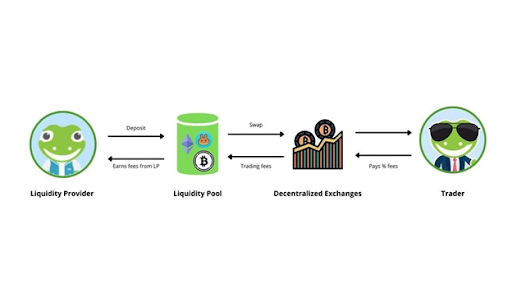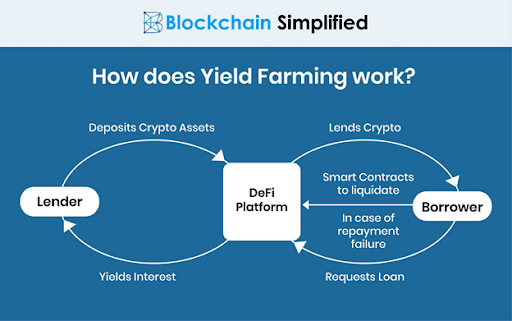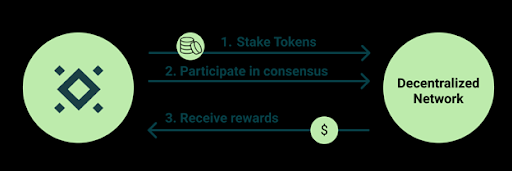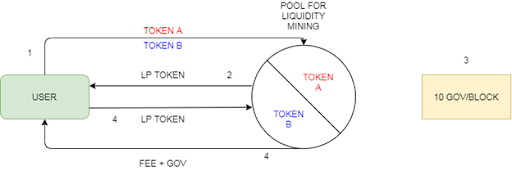
The easiest path to generating income in the crypto world might just be the most overlooked: making your crypto work for you. Like putting your money into a bank account to earn interest, there are many ways to put your crypto to work.
For example, crypto owners worldwide can earn annual percentage yields (like earning interest) by investing their crypto assets into relatively safe decentralized protocols to grow their digital wealth. These annual percentage yields are putting bank returns to shame.
This article covers the most popular DeFi activities that are taking the investing world by storm, along with how much you can earn, and how to get started.
| Method | How It Works | Est. Annual Earnings on $10K |
|---|---|---|
| Earning Interest (Yield Farming) | Yield farming works by collecting revenue and interest from liquidity pools. Investors fund these liquidity pools across smart contract DeFi platforms. Investors earn by redeeming their LP tokens to claim their shares of the interest in these liquidity pools. | Up to $800 |
| Lending | Crypto lenders lend their crypto assets to a platform by locking your assets into a smart contract. These assets are then available for borrowers. Borrowers return the actual assets along with interest, which is paid back to the crypto lenders. | $800-$1,400 |
| Staking | Staking means using specific cryptocurrencies to verify transactions on a blockchain network. Investors who participate in staking earn by validating “blocks” of recent transactions into an immutable historical record. Validated blocks generate a transaction fee paid in cryptocurrency to the investor. | $800-$1,000 |
| Providing Liquidity | Liquidity providers invest in a smart contract. Providers redeem their LP tokens to get their stakes added with any revenues generated from swaps in equal value for each pair of investments. These revenues typically come from the percentage reward of the transaction fees of the exchange. | $800-$1,400 |
Earning Interest (Yield Farming)
In a nutshell, yield farming is the practice of staking or lending crypto assets to generate high returns or rewards in the form of additional cryptocurrency. Thanks to innovations like liquidity mining, these applications of decentralized finance (DeFi) have skyrocketed in popularity in recent times. (See our list of Top DeFi Rates.)
Yield Farming lets people earn additional income on top of providing liquidity. Liquidity Providers (LP) get “LP tokens” representing their liquidity pool share. Yield is an incentive to lock assets in smart contract liquidity pools. The incentive in the case of yield farming is the interest from lenders (primarily expressed in APY – annual percentage yield).
Experts advise yield farmers to use various DeFi platforms to maximize the returns on their crypto investments. As the saying goes, “don’t put all your eggs in one basket.” These platforms offer varying APYs on lending and borrowing from liquidity pools. Some of the most popular yield farming protocols are:

There aren’t any DeFi yield farming protocols for bitcoin yet. But Wrapped Bitcoin efficiently accommodates bitcoin into the Ethereum blockchain, where it can be used by DeFi applications. If done right, investments in the stablecoin-only pools can earn up to 8 to 14% a year. That means a crypto investment of $10,000 can yield a maximum profit of $1,400 in a year.
Lending
Crypto Lending is exactly what it sounds like: you lend your digital assets, other users borrow them, and pay you back with interest.
In DeFi Lending, you do not directly let others borrow your digital assets. Instead, you lend your assets to a platform by locking your assets into a smart contract, along with other lenders. Borrowers then have access to this pool of assets. Once the time is up, borrowers return the borrowed assets to the platform, along with interest. The smart contract distributes this interest among lenders in proportion to what they committed to the platform.
Crypto lending’s high APY, compared to banks, is a big reason for their popularity, along with their ease of use. The average bank account interest rates are less than 1%, whereas platforms like BlockFi offer rates up to 8% on the USD Coin (“USDC”) stablecoin.

Some other names to consider for lending in DeFi are:
- Celsius (Max APRs: 13.3% for stablecoins and 6.35% for crypto)
- YouHolder (Max APRs: 12.7% for stablecoins and 7% for crypto)
- Crypto.com (Max APRs: 12% for stablecoins and 6.5% for crypto)
- Binance (Max APRs: 7% for stablecoins with variable APR for crypto)
- CoinLoan (Max APRs: 12.3% for stablecoins and 7.2% for crypto)
As of this writing, a $10,000 crypto investment can yield a profit of up to $800 in a year on average.
Staking
Crypto staking is committing your crypto assets to a proof-of-stake blockchain network, which helps the blockchain confirm their transactions. You, in return, get a high rate of interest. Crypto staking is available on cryptocurrencies that use the proof-of-stake model to process payments.
When you stake, you lock your digital assets in a smart contract. These are used to verify “blocks” of recent transactions and submit them for validation onto the blockchain. Users whose blocks are validated get a transaction fee paid in cryptocurrency, and this fee gets deposited into your account. Similar to a savings account, your balance generates additional income (typically at a handsome rate), usually in the same tokens.

Many DeFi tokens use staking to get users to lock into their assets for the long term and offer network revenues with the stakers as an incentive.
Some of the most popular DeFi staking protocols are:
Binance.us is estimated to project an annual reward between 8 to 10%. Coinbase estimates a 4% annual percentage yield and Ether a 4.5% annual rate. Hence, in a year, with a $10,000 crypto investment, stakers can earn profits up to $1,000.
Providing Liquidity
Liquidity pools are crypto’s alternative to an order book or matching engine, powered by smart contracts.
In the DeFi markets, liquidity pools allow crypto traders and investors to gain access to market liquidity. This means that liquidity pools are essentially pools of funds placed into a smart contract that provide liquidity for decentralized exchanges (also known as DEXs). LPs can also use the same for lending and borrowing protocols and other DeFi applications.
These liquidity pools are public. Through automated market makers (AMMs), decentralized trading pools open up the financial market for any individual to be a liquidity provider.
Typically, liquidity providers invest in a smart contract with two or more cryptocurrencies of equal proportion. This funding provides a market for initiating trading activities for that crypto pair. The incentive for the liquidity provider to provide liquidity in the first place is the percentage reward of the transaction fees of the exchange.

When a liquidity provider funds a pool, they receive a liquidity provider token (LPT) that represents their share of the pool. Providers can redeem these LP tokens to get their stakes added with any revenues generated from swaps in equal value for each pair.
Liquidity providers can access multiple layers of earning opportunities by utilizing their liquidity providers tokens on other Decentralized Financing protocols. As a result, the APYs can be pretty high for LPs. But there’s a catch. They do come with the additional risk of impermanent loss (IL). IL is what happens when pooled tokens fluctuate significantly in price. (Despite the name, the loss is permanent.)
That said, newbies can invest in stablecoin-only pools and earn around 8 to 14% a year with little to no worry of impermanent losses. That means a crypto investment of $10,000 can yield a maximum profit of $1,400 in a year.
Some of the most popular DeFi liquidity pool protocols are:
Summary
While all these methods are highly effective in generating income through your digital assets, staking can be the easiest way for newbies to increase their cryptocurrency holdings with minimal effort. Cryptocurrencies such as DOT, ADA, AVAX, etc., are employed in this method. And by staking them, investors can earn APYs, usually in the 4%-25% range, depending on how long you are willing to lock your cryptos.
DeFi earning is far from being a get-rich-quick scheme and does require patience and some careful consideration. Do your research, and don’t invest more than you’re willing to lose.
However, many regard DeFi as a relatively safe way to earn crypto without the stresses and headaches that come with the volatility of cryptocurrency trading, since you still maintain control over the funds.
Related articles:
Subscribe to our free daily newsletter to get more crypto investing tips.

